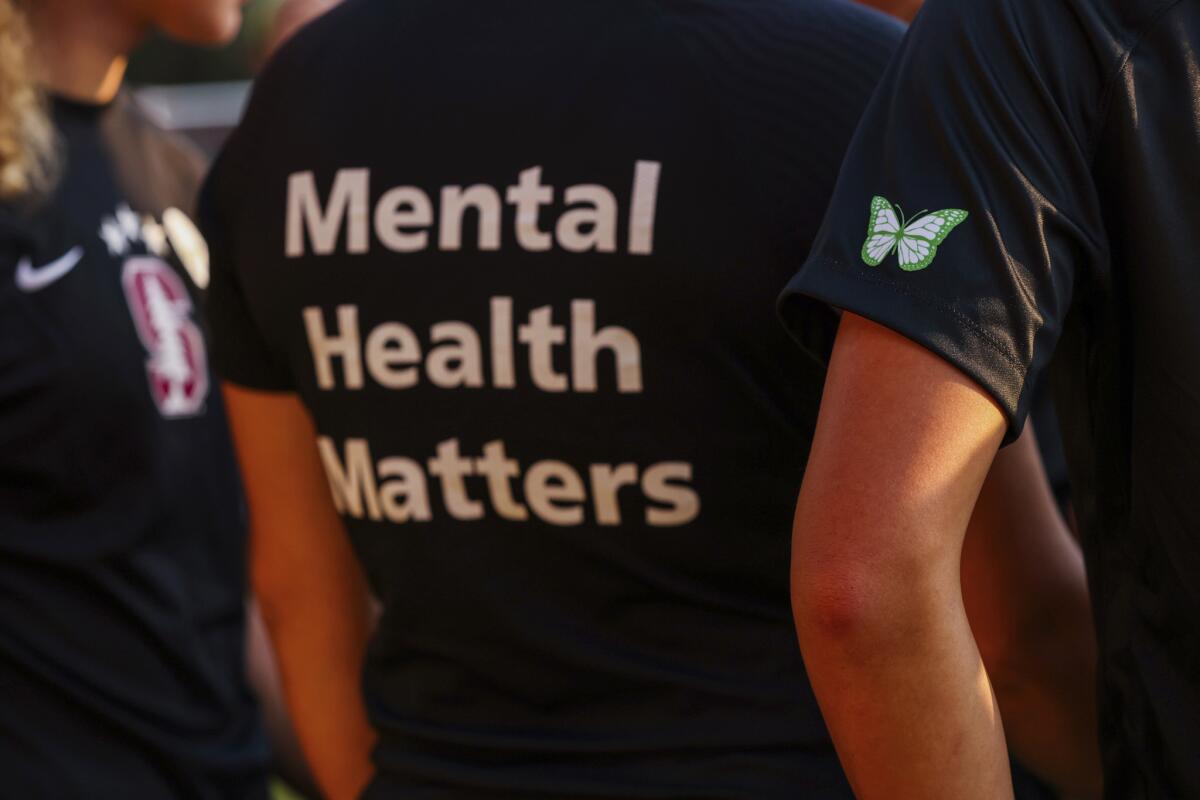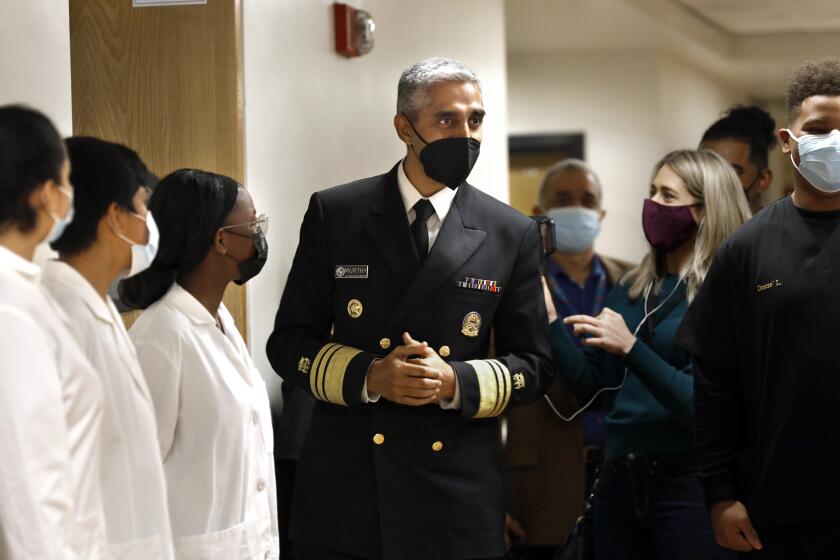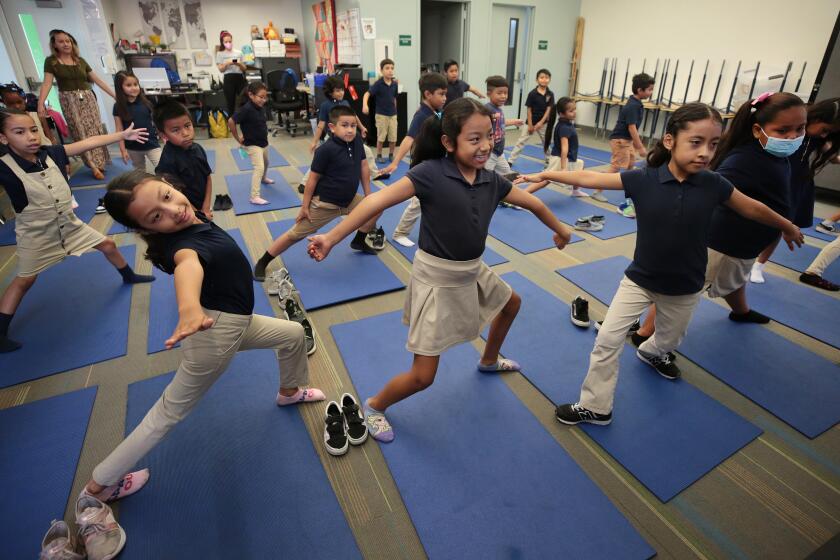The pandemic took a harsh toll on teen girls’ mental health, CDC says

- Share via
The pandemic took a harsh toll on U.S. teen girls’ mental health, with almost 60% reporting feelings of persistent sadness or hopelessness, according to a government survey released Monday that bolsters earlier data.
Sexual violence, suicidal thoughts, suicidal behavior and other mental health woes affected many teens regardless of race or ethnicity, but girls and LGBTQ youth fared the worst on most measures, according to the report from the Centers for Disease Control and Prevention. More than 17,000 U.S. high school students were surveyed in class in the fall of 2021.
In 30 years of collecting similar data, “we’ve never seen this kind of devastating, consistent findings,” said Kathleen Ethier, director of CDC’s adolescent and school health division. “There’s no question young people are telling us they are in crisis. The data really call on us to act.”
The advisory is to call attention to a “youth mental health crisis” and recommend resources to call on and actions to take.
The research found:
• Among girls, 30% said they seriously considered attempting suicide, double the rate among boys and up almost 60% from a decade ago.
• Almost 20% of girls reported experiencing rape or other sexual violence in the previous year, also an increase over previous years.
• Almost half of LGBTQ students said they had seriously considered a suicide attempt.
• More than a quarter of American Indians and Alaska natives said they had seriously considered a suicide attempt — higher than other races and ethnicities.
• Feelings of persistent sadness and hopelessness affected more than one-third of kids of all races and ethnicities and increased over previous years.
• Recent poor mental health was reported by half of LGBTQ kids and almost one-third of American Indian and Alaska Native youth.
Our hope is that we can help make the cascade of threats to your mental health a little easier to manage.
The results echo previous surveys and reports, and many of the trends began before the pandemic. But isolation, online schooling and increased reliance on social media during the pandemic made things worse for many kids, mental health experts say.
The results “reflect so many decades of neglect towards mental health, for kids in particular,” said Mitch Prinstein, the American Psychological Assn.’s chief science officer. “Suicide has been the second- or third-leading cause of death for young people between 10 and 24 years for decades now,” and attempts are typically more common in girls, he said.
Prinstein noted that anxiety and depression tend to be more common in teen girls than boys, and pandemic isolation may have exacerbated that.
Comprehensive reform in how society manages mental health is needed, Prinstein said. In schools, kids should be taught ways to manage stress and strife, just as they are taught about exercise for physical disease prevention, he said.
In a world that can often feel out of control, People’s Yoga aims to teach kids how to create a safe place of their own through mindfulness and meditation.
In low-income areas, where adverse childhood experiences were high before the pandemic, the crisis has been compounded by a shortage of school staff and mental health professionals, experts say.
School districts around the country have used federal pandemic money to hire more mental health specialists, if they can find them, but say they are stretched thin and that students who need expert care outside of school often can’t get it because therapists are overburdened and have long waitlists.
AP writer Jocelyn Gecker contributed in San Francisco contributed to this report.









